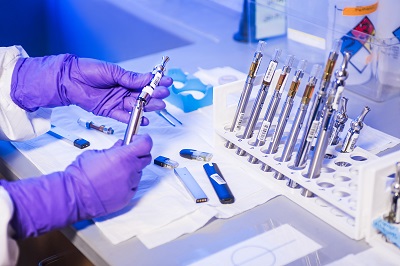To apply for Class B medical device registration with the Health Sciences Authority (HSA) in Singapore, you must meet certain regulatory requirements and submit relevant documentation as part of the registration process. Below is a breakdown of the essential requirements for the application:
1. Device Classification
- Ensure your device is classified as Class B: Class B devices are considered low to moderate risk. The classification is determined based on the device's intended use, potential risks, and the nature of the device.
- Verify classification: If you're uncertain about the classification, consult HSA's classification guidelines or contact HSA for assistance.
2. Appoint a Local Authorized Representative (LAR)
- Foreign manufacturers: If you are based outside Singapore, you must appoint a local authorized representative (LAR) who is registered with HSA to handle the registration process on your behalf.
- Duties of LAR: The LAR will submit the application, handle communications with HSA, and ensure the device's compliance with local regulations.
3. Submit Application via Health Products Regulation System (HPRS)
- HPRS account: You (or your LAR) need to create an account on HSA’s Health Products Regulation System (HPRS).
- Complete the online application form: The form requires information about the device, its manufacturer, and the intended use.
4. Required Documentation
You must provide the following documents to support your Class B medical device registration:
1. Product Registration Form
- Complete the online registration form via HPRS, providing basic details about the device, its intended use, and its manufacturer.
2. Device Description and Information
- Description of the device, including its composition, components, intended use, and general technical specifications.
- Intended Use Statement: A clear description of what the device is meant to do (e.g., diagnostic, therapeutic, etc.).
3. Conformity Assessment
- International Certification: Provide evidence of regulatory approval or certification from another recognized authority, such as:
- CE Marking (for devices marketed in the EU)
- FDA Approval (for devices marketed in the US)
- Other recognized regulatory certifications
- Declaration of Conformity: A document confirming that your device complies with the applicable safety and performance standards.
4. Risk Management Report
- A report that outlines how risks associated with the device have been identified, evaluated, and mitigated. This report should comply with ISO 14971 or equivalent standards for risk management in medical devices.
5. Clinical Evaluation Report (if applicable)
- If the device involves clinical testing or poses a higher clinical risk, a clinical evaluation report is required. This report should summarize the clinical data supporting the safety and effectiveness of the device.
6. Quality Management System (QMS) Certificate
- A QMS Certificate such as ISO 13485 that demonstrates your manufacturing processes comply with international quality management standards.
7. Free Sale Certificate
- A certificate from the regulatory authority in the country of origin confirming that the device is legally sold in that country. This document supports the device’s marketability.
8. Labeling and Instructions for Use (IFU)
- Device labeling: Ensure the device’s labeling complies with HSA’s requirements, which may include specific regulatory symbols (e.g., CE mark, product identifier).
- Instructions for Use (IFU): Clear instructions on how to use the device, its risks, warnings, and precautions.
9. Other Supporting Documents (if required)
- Depending on the specific nature of the device, HSA may request additional documents, such as:
- Test reports
- Performance data
- Evidence of compliance with specific local standards
5. Pay the Application Fee
- Registration Fee: Fees for Class B medical devices are generally moderate compared to higher-class devices (Class C and D). The exact fee depends on the specifics of the device and can be found on HSA's website.
- Payment: Payment is made online through the HPRS system upon submission of the application.
6. Submit the Application
- Submit online: After completing the application and uploading all necessary documents, submit your application through HPRS. Your local authorized representative (if applicable) will handle this submission on your behalf.
7. Evaluation by HSA
After the application is submitted, HSA will begin the evaluation process. This involves reviewing the submitted documentation for completeness and ensuring compliance with regulatory requirements. Key aspects of the evaluation include:
- Document Verification: Ensure that all required documents have been provided and meet the necessary standards.
- Technical Evaluation: Review the device’s safety, efficacy, and performance data.
- Risk Assessment Review: Ensure that the device complies with risk management practices and meets safety standards.
Timeline: The review process for Class B devices typically takes 1 to 3 months, depending on the complexity of the device and the completeness of the application.
8. Registration Approval
- If your application is successful, HSA will issue a Certificate of Registration. This certificate grants you the legal right to market and sell the device in Singapore.
- The certificate will include details such as the device’s name, manufacturer, and registration number.
9. Post-Market Requirements
After the device is registered, you must comply with post-market surveillance obligations, including:
- Adverse Event Reporting: Report any adverse events, product defects, or safety concerns to HSA as per their guidelines.
- Recalls (if necessary): If there are safety issues or non-compliance, you may be required to conduct a product recall.
- Post-Market Surveillance: Ensure continued compliance with regulatory requirements by monitoring the device’s performance and safety once it is in the market.
Key Requirements Recap
- Appoint a local authorized representative (for foreign manufacturers).
- Complete the online application through HPRS.
- Prepare and submit required documentation, including:
- Product registration form
- Device description and intended use
- Conformity assessment (e.g., CE, FDA approval)
- Risk management report (ISO 14971)
- Clinical evaluation report (if applicable)
- Quality management system certificate (e.g., ISO 13485)
- Free sale certificate
- Labeling and instructions for use
- Pay the applicable registration fee.
- Submit the application for evaluation.
- Await HSA evaluation and approval.
- Comply with post-market surveillance requirements once registered.

Contact Us:
Whatsapp or Wechat:+86 15816864648;email address:hito.lin@grzan.cn
.png)
.jpg)

.png)

.png)